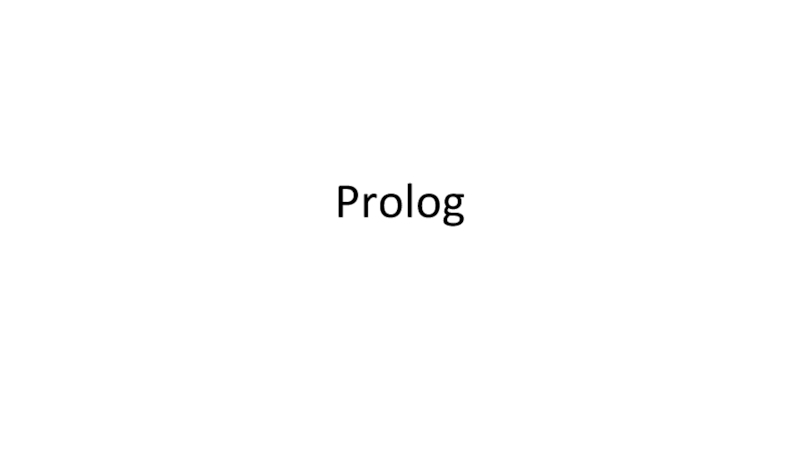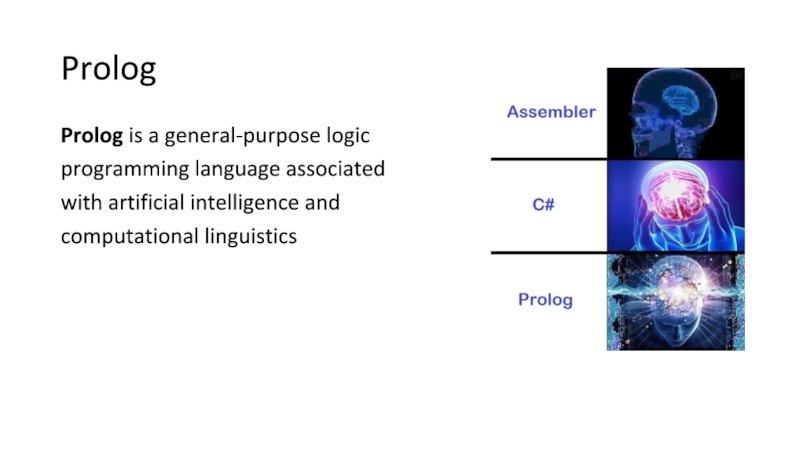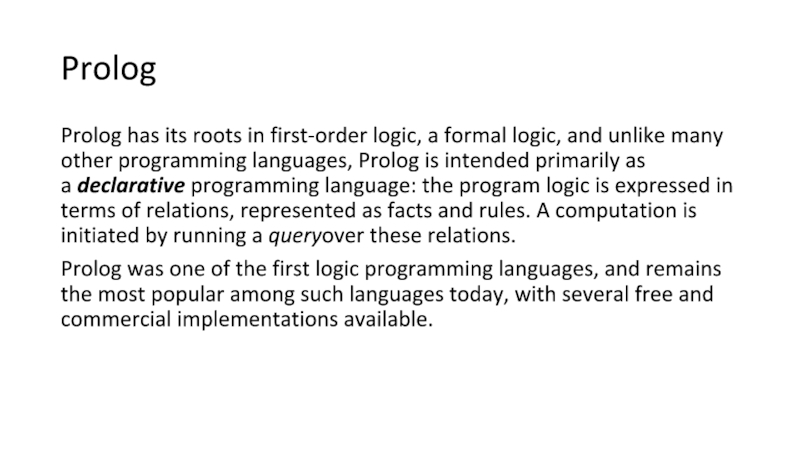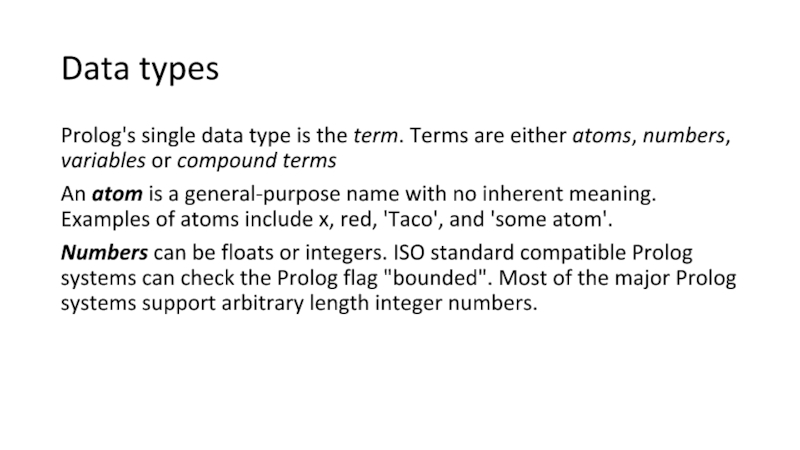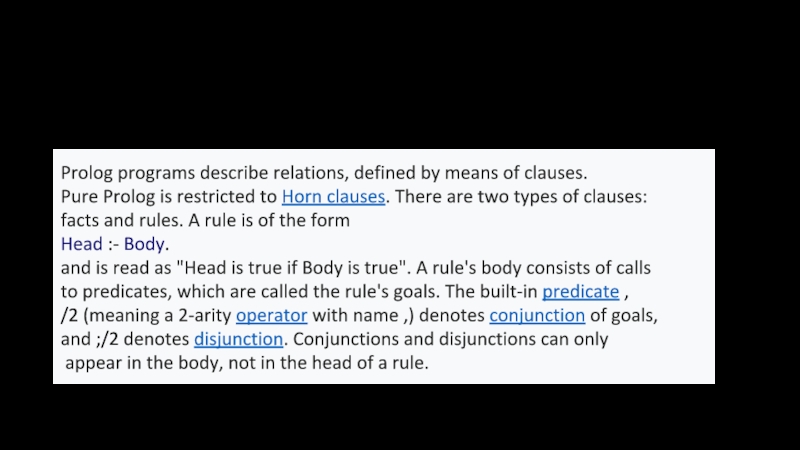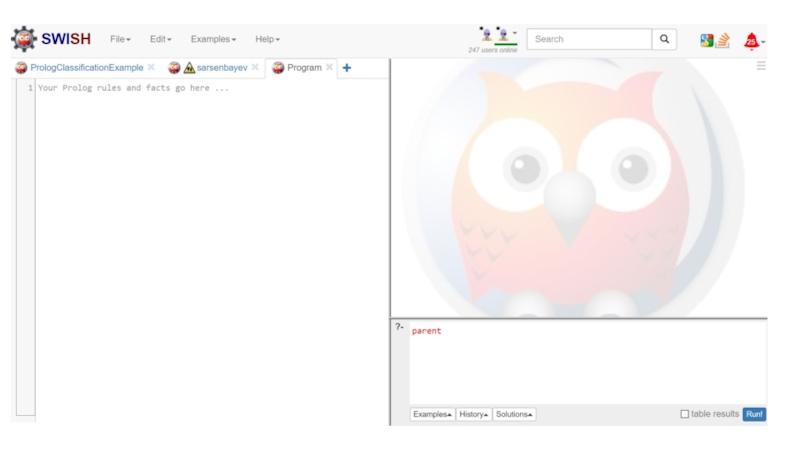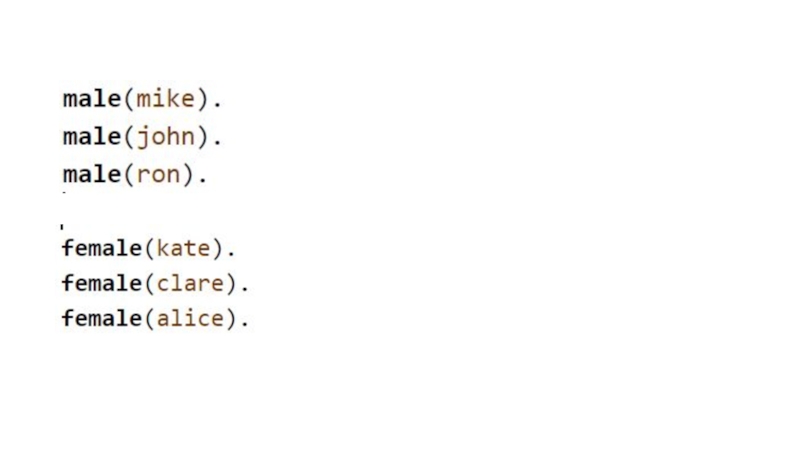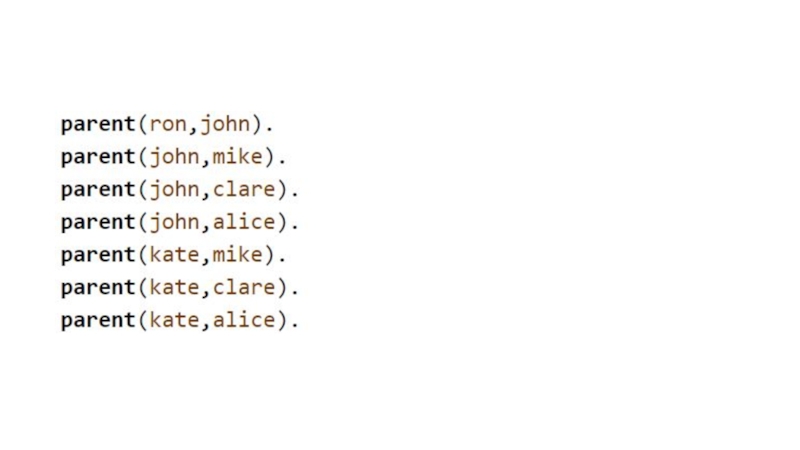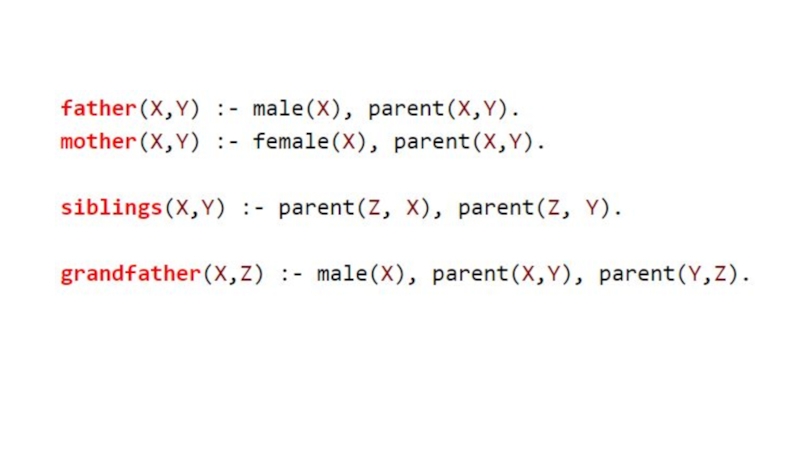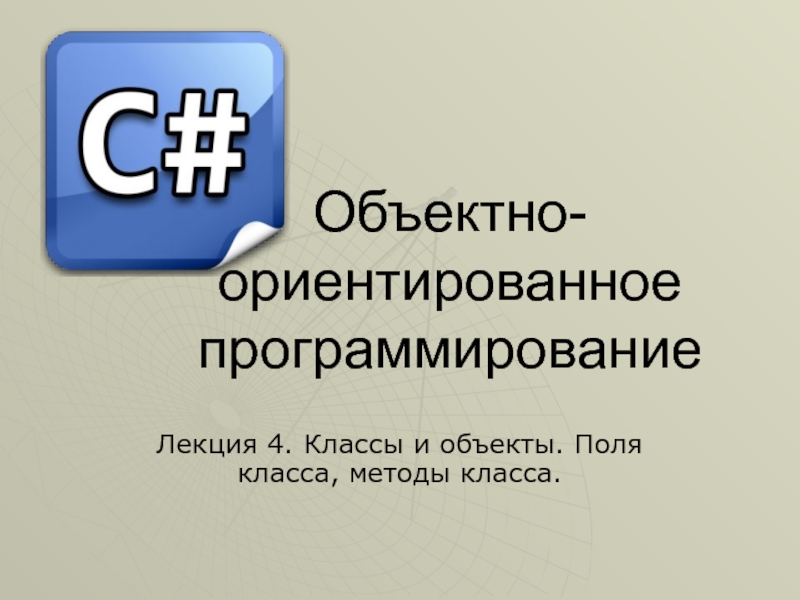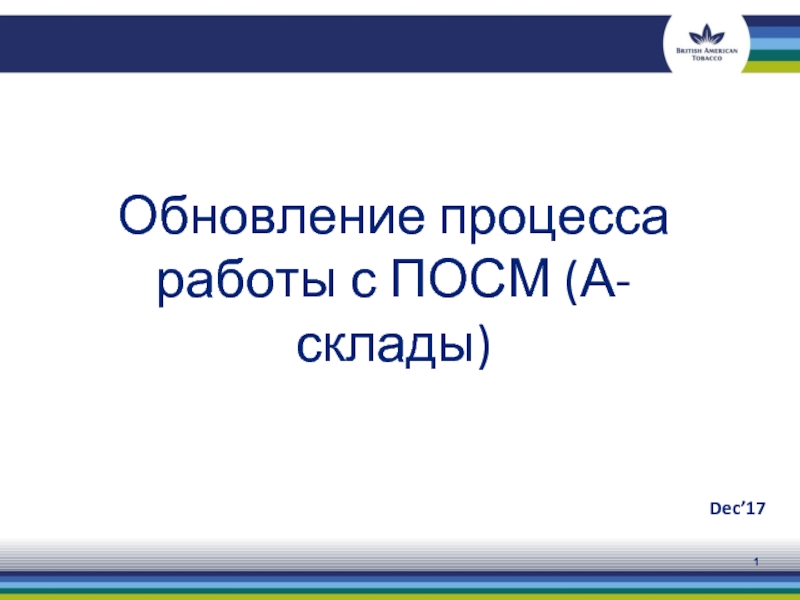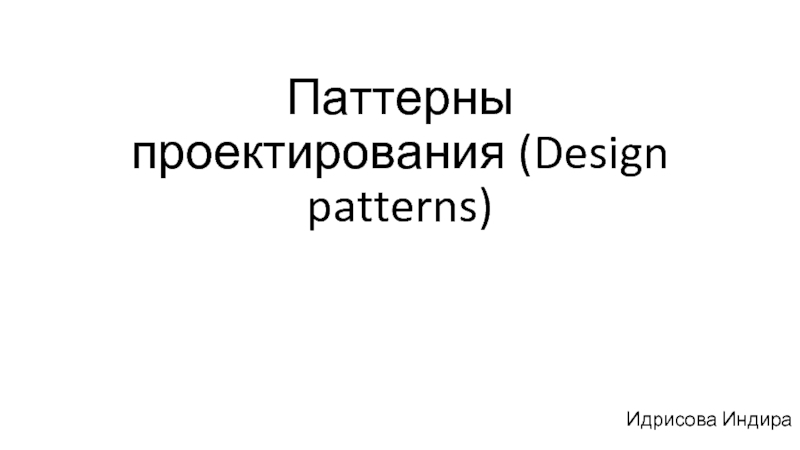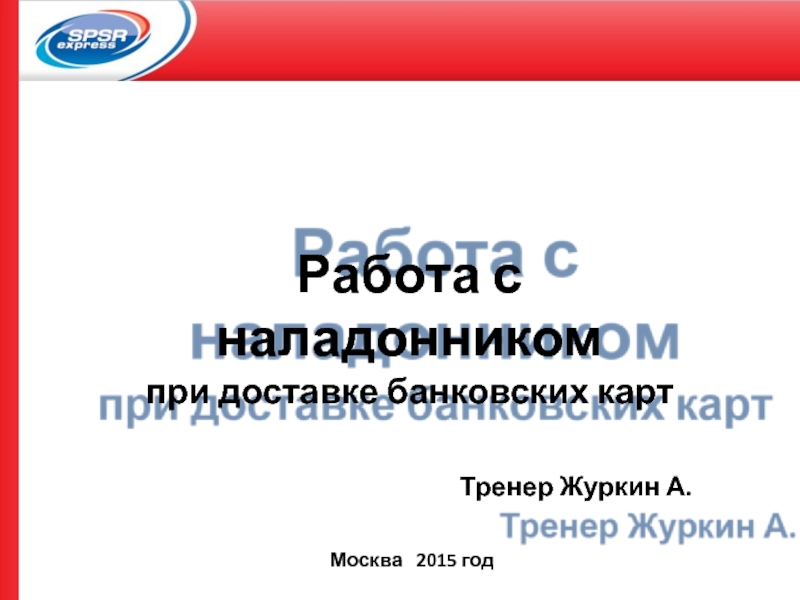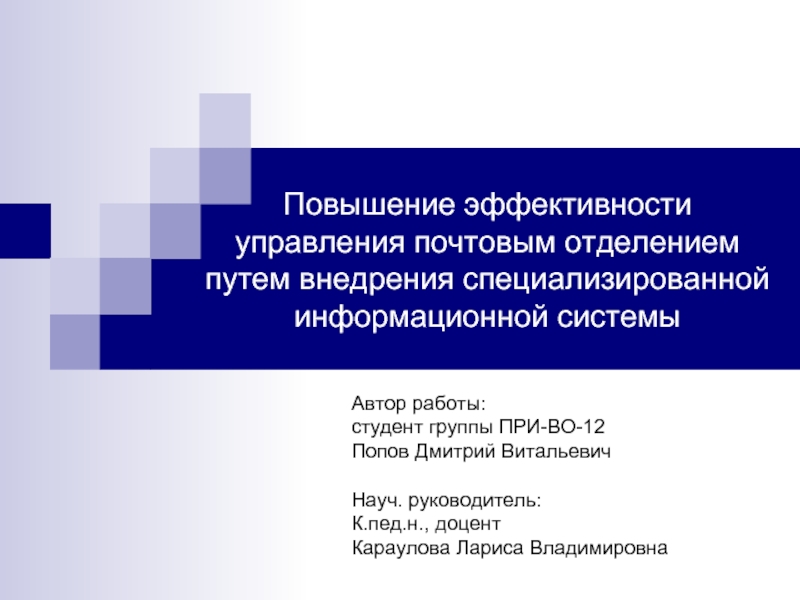- Главная
- Разное
- Дизайн
- Бизнес и предпринимательство
- Аналитика
- Образование
- Развлечения
- Красота и здоровье
- Финансы
- Государство
- Путешествия
- Спорт
- Недвижимость
- Армия
- Графика
- Культурология
- Еда и кулинария
- Лингвистика
- Английский язык
- Астрономия
- Алгебра
- Биология
- География
- Детские презентации
- Информатика
- История
- Литература
- Маркетинг
- Математика
- Медицина
- Менеджмент
- Музыка
- МХК
- Немецкий язык
- ОБЖ
- Обществознание
- Окружающий мир
- Педагогика
- Русский язык
- Технология
- Физика
- Философия
- Химия
- Шаблоны, картинки для презентаций
- Экология
- Экономика
- Юриспруденция
Prolog. A general-purpose logic programming language associated with artificial intelligence and computational linguistics презентация
Содержание
- 1. Prolog. A general-purpose logic programming language associated with artificial intelligence and computational linguistics
- 2. Prolog Prolog is a general-purpose logic programming language associated with artificial intelligence and computational linguistics
- 3. Prolog Prolog has its roots in first-order logic,
- 4. Data types Prolog's single data type is the term. Terms
- 5. Data types Variables are denoted by a
- 6. Rules and facts Prolog programs describe relations,
Слайд 2Prolog
Prolog is a general-purpose logic
programming language associated
with artificial intelligence and
computational linguistics
Слайд 3Prolog
Prolog has its roots in first-order logic, a formal logic, and unlike many
other programming languages, Prolog is intended primarily as a declarative programming language: the program logic is expressed in terms of relations, represented as facts and rules. A computation is initiated by running a queryover these relations.
Prolog was one of the first logic programming languages, and remains the most popular among such languages today, with several free and commercial implementations available.
Prolog was one of the first logic programming languages, and remains the most popular among such languages today, with several free and commercial implementations available.
Слайд 4Data types
Prolog's single data type is the term. Terms are either atoms, numbers, variables
or compound terms
An atom is a general-purpose name with no inherent meaning. Examples of atoms include x, red, 'Taco', and 'some atom'.
Numbers can be floats or integers. ISO standard compatible Prolog systems can check the Prolog flag "bounded". Most of the major Prolog systems support arbitrary length integer numbers.
An atom is a general-purpose name with no inherent meaning. Examples of atoms include x, red, 'Taco', and 'some atom'.
Numbers can be floats or integers. ISO standard compatible Prolog systems can check the Prolog flag "bounded". Most of the major Prolog systems support arbitrary length integer numbers.
Слайд 5Data types
Variables are denoted by a string consisting of letters, numbers
and underscore characters, and beginning with an upper-case letter or underscore. Variables closely resemble variables in logic in that they are placeholders for arbitrary terms.
A compound term is composed of an atom called a "functor" and a number of "arguments", which are again terms. Compound terms are ordinarily written as a functor followed by a comma-separated list of argument terms, which is contained in parentheses. The number of arguments is called the term's arity. An atom can be regarded as a compound term with arity zero. Examples of compound terms are truck_year('Mazda', 1986) and 'Person_Friends'(zelda,[tom,jim]).
A compound term is composed of an atom called a "functor" and a number of "arguments", which are again terms. Compound terms are ordinarily written as a functor followed by a comma-separated list of argument terms, which is contained in parentheses. The number of arguments is called the term's arity. An atom can be regarded as a compound term with arity zero. Examples of compound terms are truck_year('Mazda', 1986) and 'Person_Friends'(zelda,[tom,jim]).
Слайд 6Rules and facts
Prolog programs describe relations, defined by means of clauses.
Pure Prolog is restricted to Horn clauses. There are two types of clauses:
facts and rules. A rule is of the form
Head :- Body.
and is read as "Head is true if Body is true". A rule's body consists of calls
to predicates, which are called the rule's goals. The built-in predicate ,
/2 (meaning a 2-arity operator with name ,) denotes conjunction of goals,
and ;/2 denotes disjunction. Conjunctions and disjunctions can only
appear in the body, not in the head of a rule.
